UPTON, NY—Scientists at the U.S. Department of Energy’s (DOE) Brookhaven National Laboratory have successfully demonstrated that autonomous methods can discover new materials. The artificial intelligence (AI)-driven technique led to the discovery of three new nanostructures, including a first-of-its-kind nanoscale “ladder.
Tag: Center for Functional Nanomaterials
Next-Gen Semiconductor Manufacturing Tech Wins DOE National Pitch Competition
A process for making hybrid organic-inorganic materials (photoresists) sensitive to extreme-ultraviolet (EUV) light is one of two technologies that won the 2021 National Labs Accelerator Pitch Event. This technology—developed at the Center for Functional Nanomaterials (CFN), a U.S. Department of Energy (DOE) Office of Science User Facility at Brookhaven National Laboratory—could be used for next-generation semiconductor manufacturing by EUV lithography.
Imaging the Chemical Fingerprints of Molecules
Experiment, theory, and simulation show basic chemical properties are imprinted in atomic force microscope images and may help ID unknown molecules.
Zhongwei Dai: Exploring the Strange Quantum World of 2D Materials
Zhongwei Dai, a researcher in the Interface Science and Catalysis Group of the Center for Functional Nanomaterials, probes the properties of atomically thin materials to identify promising candidates for quantum information science applications
Brookhaven Lab and Euclid Techlabs to Develop Coated Cathodes for Electron-Ion Collider
The protective coatings are intended to extend the lifetime of the materials for applications in nuclear physics facilities.
Toward Scaling Up Nanocages to Trap Noble Gases
Commercially available materials may be a potentially scalable platform for trapping gases for nuclear energy and other applications.
Layered Graphene with a Twist Displays Unique Quantum Confinement in 2-D
Bilayer graphene with one of the two layers twisted displayed unique resonant electronic behavior. Understanding how electrons move in such 2-D materials could shed light on how to manipulate them for quantum computing and communication.
Tracking Pileups on Battery Charging Route to Drive Performance
An understanding of this mechanism could help scientists increase the total amount of energy stored by next-generation lithium-ion batteries.
Shih-Ting (Christine) Wang: Designing Materials for Biomedicine
Using DNA-based assembly, the Center for Functional Nanomaterials postdoc has assembled functional proteins into ordered lattices and coated nanostructures for drug delivery.
Automatically Steering Experiments Toward Scientific Discovery
Scientists at Brookhaven and Lawrence Berkeley National Laboratories have been developing an automated experimental setup of data collection, analysis, and decision making.
Leveraging DNA to Create Advanced, Usable Materials with Jason Kahn
Jason Kahn, a staff scientist at the Center for Functional Nanomaterials (CFN), is conducting research in DNA-based assembly and building a one-of-a-kind automated platform to explore self-assembly processes.
Putting Functional Proteins in Their Place
Using DNA, scientists organized bioactive proteins in desired 2-D and 3-D ordered arrays—promising for structural biology, biomedicine, and more.
Capturing the Chemistry of Light-Activated Cancer Drugs with Ruomei Gao
Ruomei Gao—an associate professor at SUNY College at Old Westbury—has been using facilities at the Center for Functional Nanomaterials at Brookhaven Lab to investigate two primary processes of photosensitization for cancer therapy and prevention.
Scientists Discover New Approach to Stabilize Cathode Materials
UPTON, NY—A team of researchers led by chemists at the U.S. Department of Energy’s (DOE) Brookhaven National Laboratory has studied an elusive property in cathode materials, called a valence gradient, to understand its effect on battery performance. The findings, published in Nature Communications, demonstrated that the valence gradient can serve as a new approach for stabilizing the structure of high-nickel-content cathodes against degradation and safety issues.
New Dual-Beam Microscope Installed at the Center for Functional Nanomaterials
This latest-generation tool, which combines a scanning electron microscope and focused-ion beam, has advanced capabilities for preparing and analyzing nanomaterial samples.
Brookhaven Lab and Northrop Grumman to Further Lab-Industry Collaborations
Through the U.S. Department of Energy’s Technologist in Residence program, Brookhaven Lab and Northrop Grumman scientists will partner on quantum materials research.
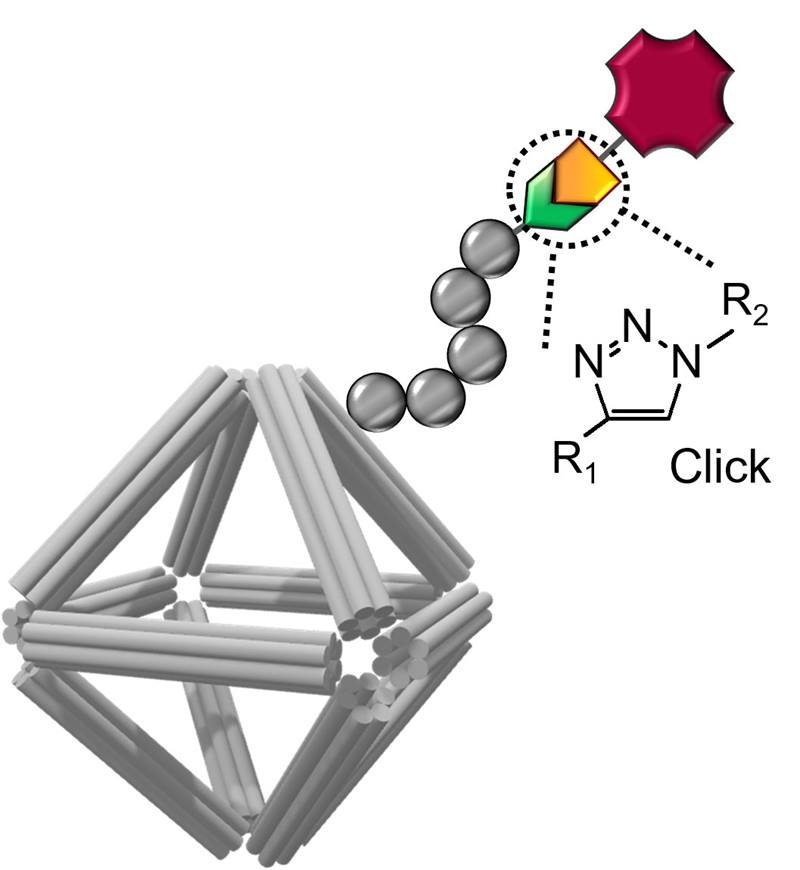
Fighting Cancer with DNA Origami
Scientists have devised a new way to build nanomaterials that can maintain their structural integrity and functionality in ways relevant to drug delivery. The team developed a class of molecular coatings compatible with biological environments. They used these coating to stabilize wireframed DNA origami cages that can carry an anticancer drug with a slower release of the medicine over time than possible with noncoated counterparts.
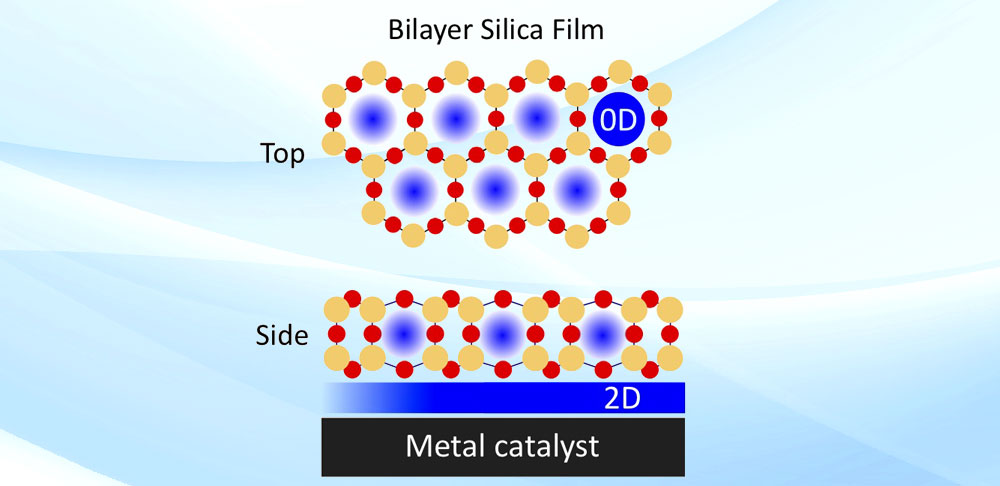
Chemistry Goes Under Cover
Scientists have discovered that physically confined spaces can make for more efficient chemical reactions.
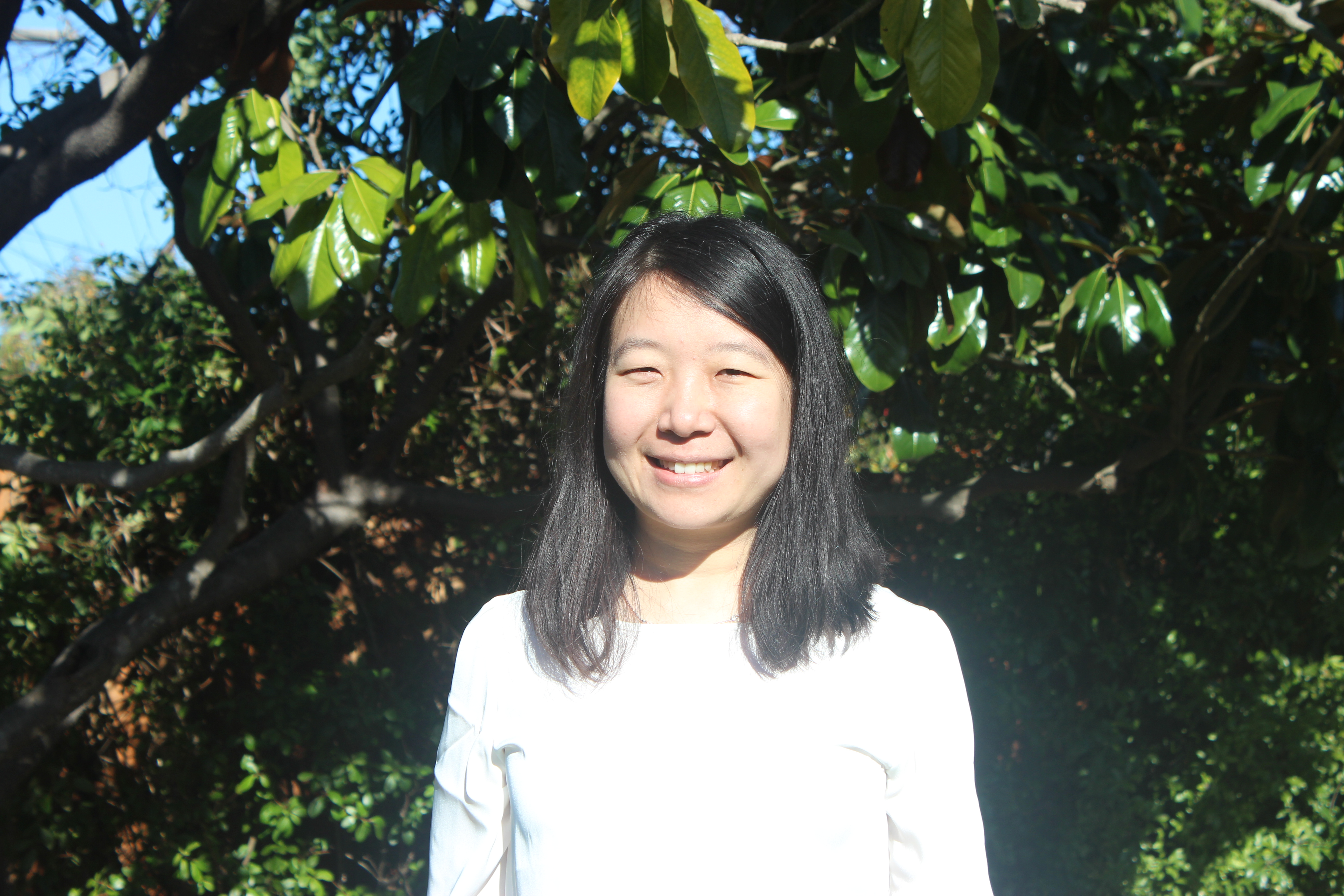
Designing Materials from First Principles with Yuan Ping
The UC Santa Cruz professor uses computing resources at Brookhaven Lab’s Center for Functional Nanomaterials to run calculations for quantum information science, spintronics, and energy research.
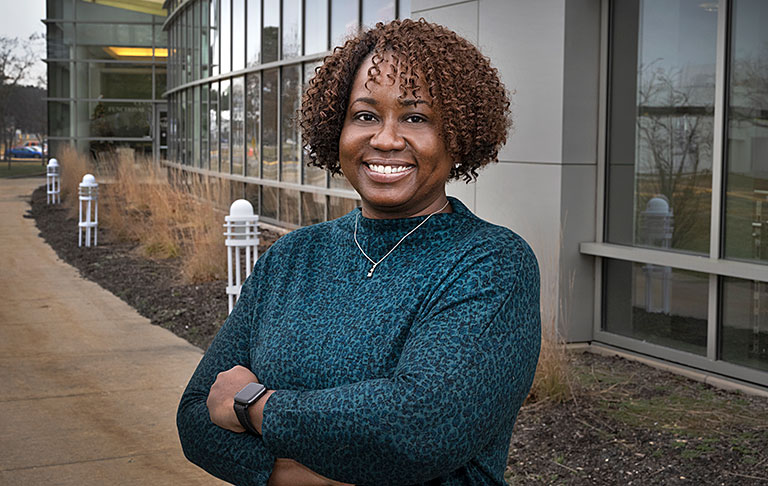
Operating Efficiently and Compliantly with Essala Lowe
As the CFN assistant director of operations, Lowe oversees day-to-day administrative functions essential to CFN success.
Nikhil Tiwale: Practicing the Art of Nanofabrication
Applying his passions for science and art, Nikhil Tiwale—a postdoc at Brookhaven Lab’s Center for Functional Nanomaterials—is fabricating new microelectronics components.
Brookhaven’s Kevin Yager Named Oppenheimer Leadership Fellow
Yager, a group leader at the Center for Functional Nanomaterials, is exploring challenges and opportunities for the U.S. Department of Energy.
Exploring Blended Materials Along Compositional Gradients
A new platform could accelerate the development of blended materials with desired properties.
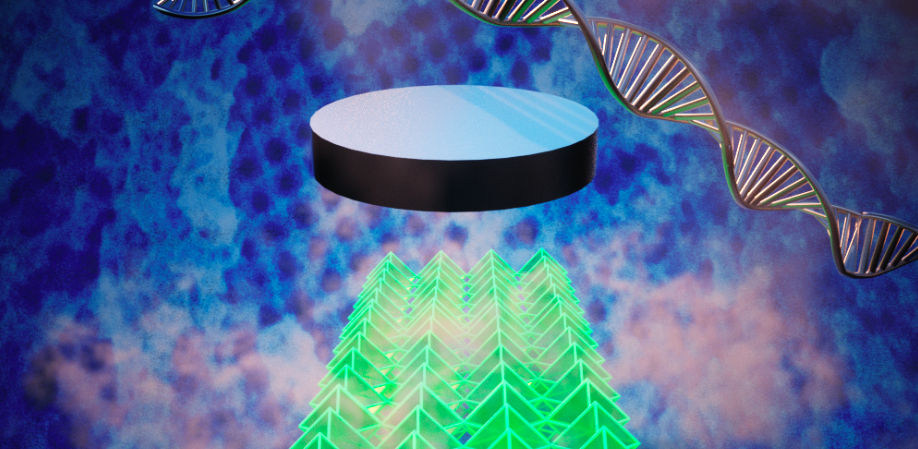
Making 3-D Nanosuperconductors with DNA
Scientists developed a platform for making 3-D superconducting nano-architectures with a prescribed organization.
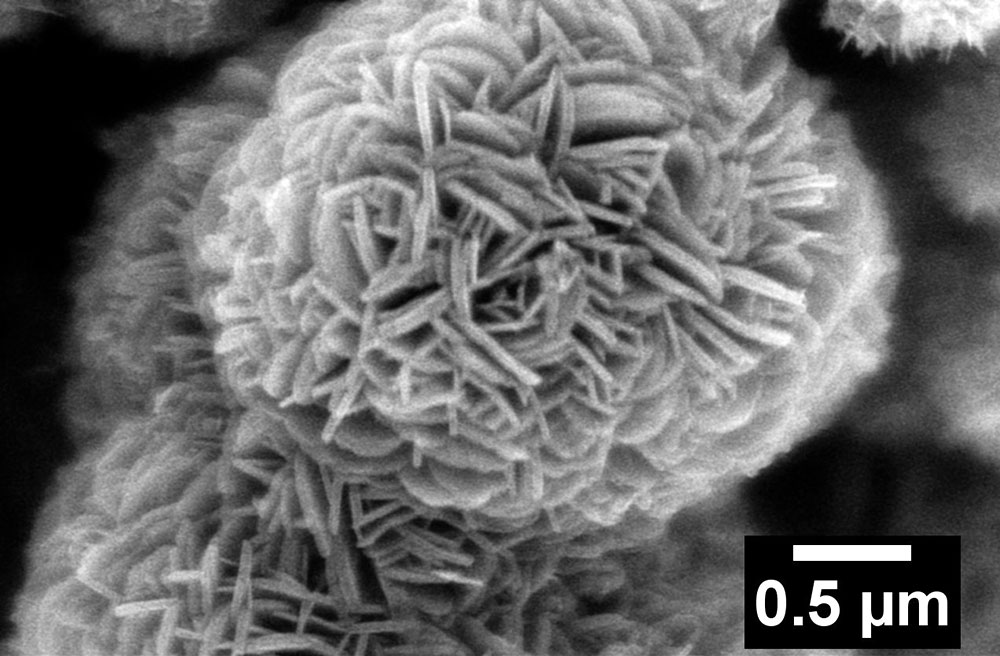
Lithium-Ion Battery Research “Flowers”
Scientists improved the performance of a battery electrode material with a unique flower-shaped nanostructure.
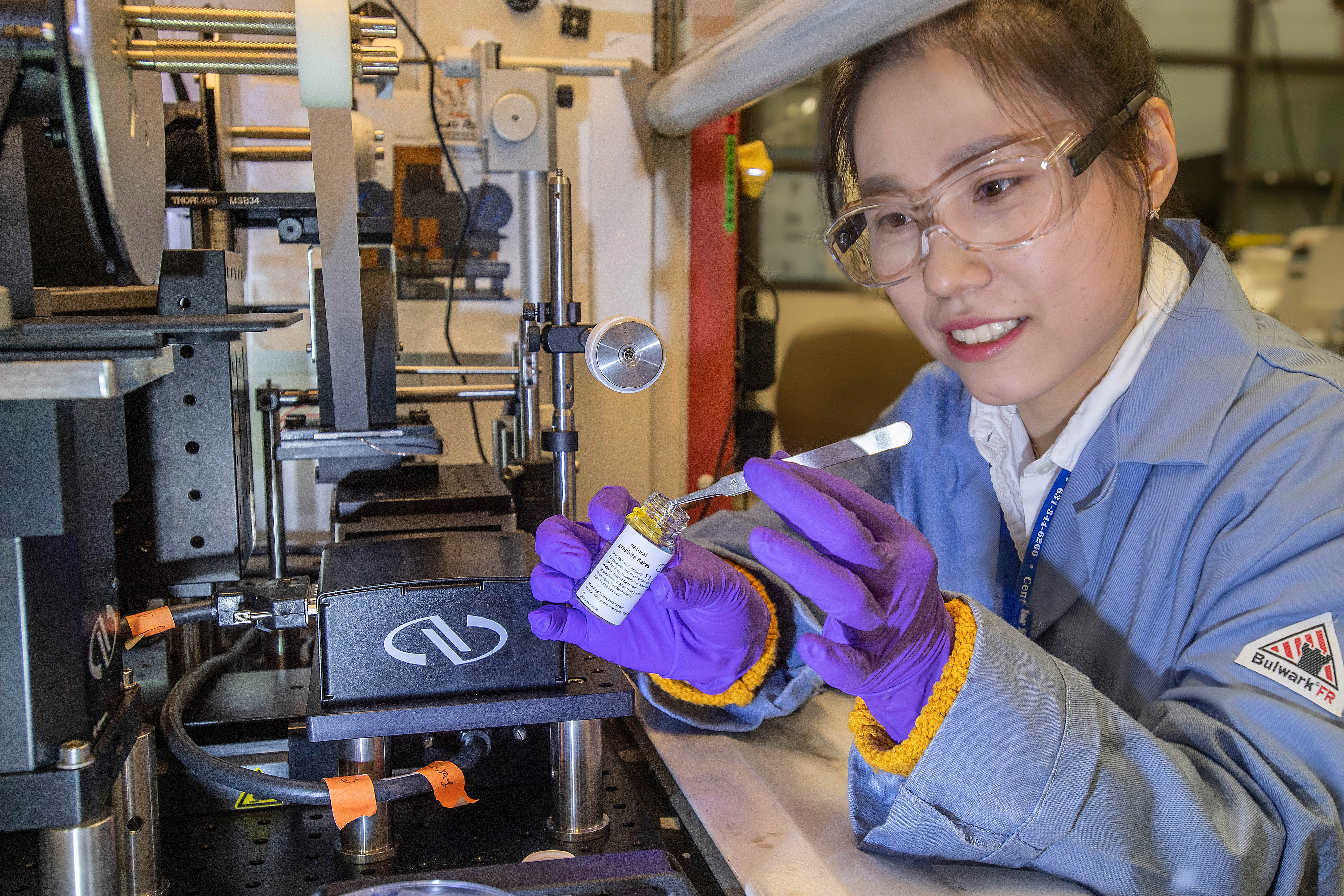
Automating 2-D Material Exfoliation with Suji Park
Park, a staff researcher at Brookhaven Lab’s Center for Functional Nanomaterials, is designing and building an automated system to generate high-quality ultrathin “flakes,” which can be stacked into layered structures that are essentially new materials.
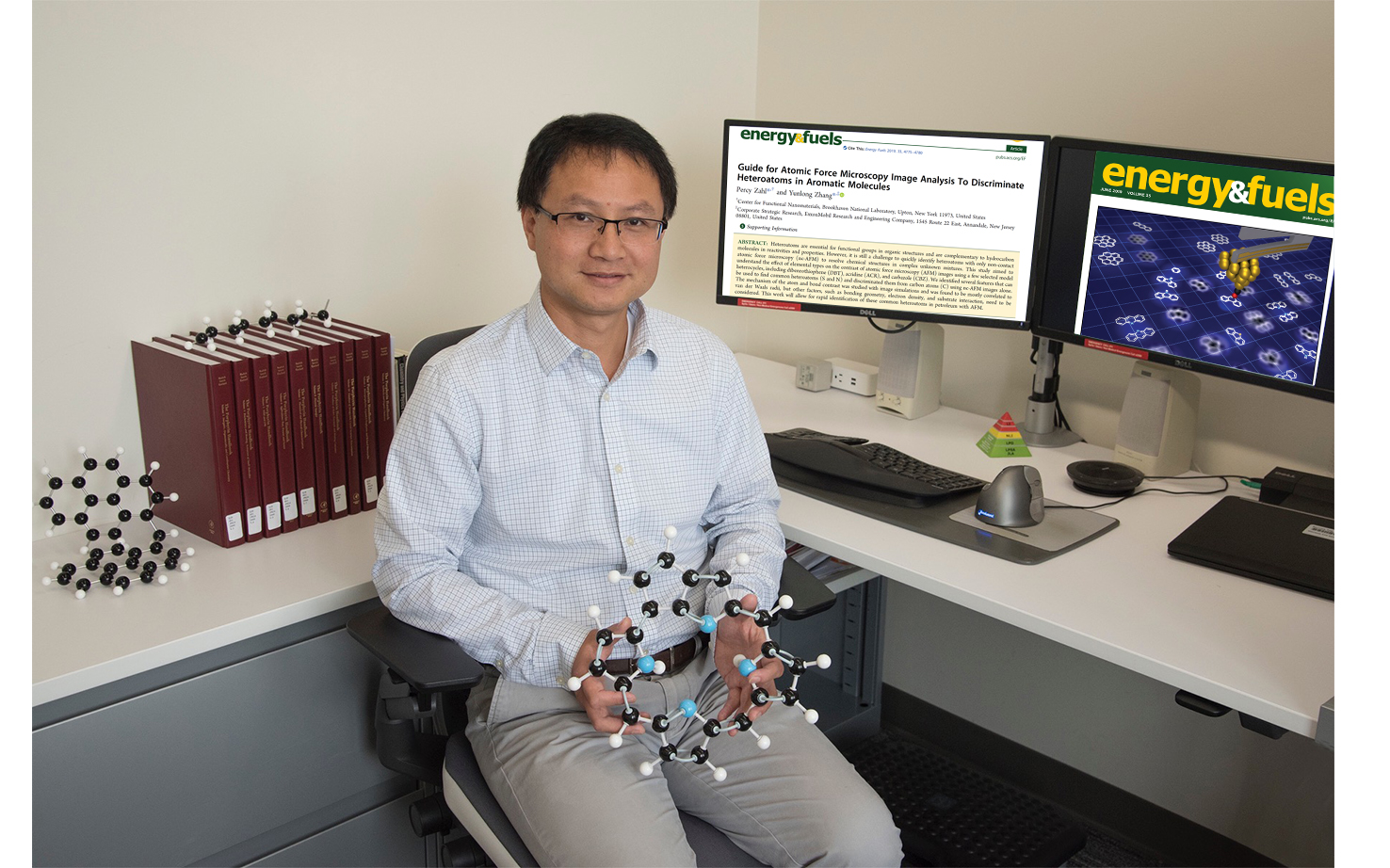
Decoding the Structure of Petroleum with Yunlong Zhang
ExxonMobil chemist and user of Brookhaven Lab’s Center for Functional Nanomaterials (CFN) Yunlong Zhang is characterizing molecules in petroleum with high-resolution atomic force microscopy.
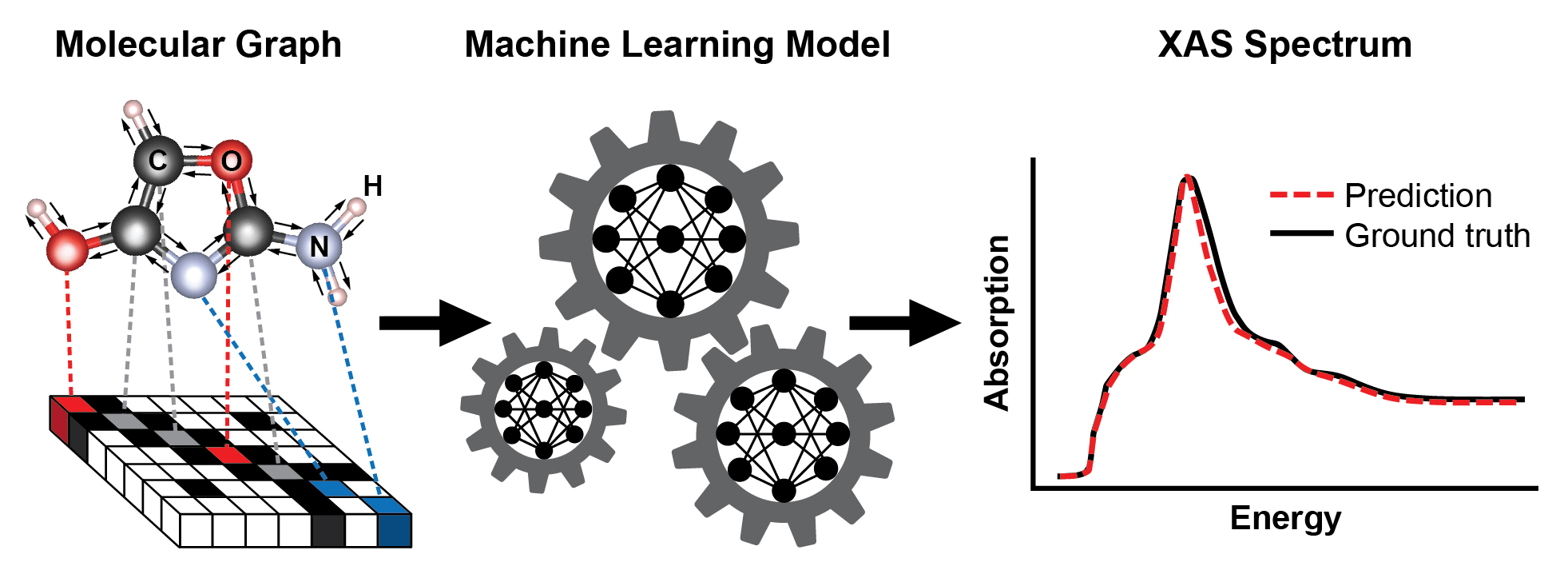
Predicting X-ray Absorption Spectra from Graphs
Scientists built a machine learning model that can rapidly predict how atoms absorb x-rays for materials science research.
Brookhaven and Forge Nano to Mature Noble Gas-Trapping Technology
Through DOE’s Technology Commercialization Fund, the national lab-startup team will develop “nanocages” for nuclear applications.

At the Interface of Organic Chemistry and Nanotechnology with Adam Braunschweig
Adam Braunschweig—a CUNY ASRC associate professor—is a user at Brookhaven Lab’s Center for Functional Nanomaterials (CFN) studying how molecules in organic semiconductor thin films pack together.
Peering into Functioning Batteries with Sooyeon Hwang
Using electron microscopes, Hwang—a materials scientist at Brookhaven Lab’s Center for Functional Nanomaterials (CFN)—characterizes the structure and chemistry of operating battery electrode materials.
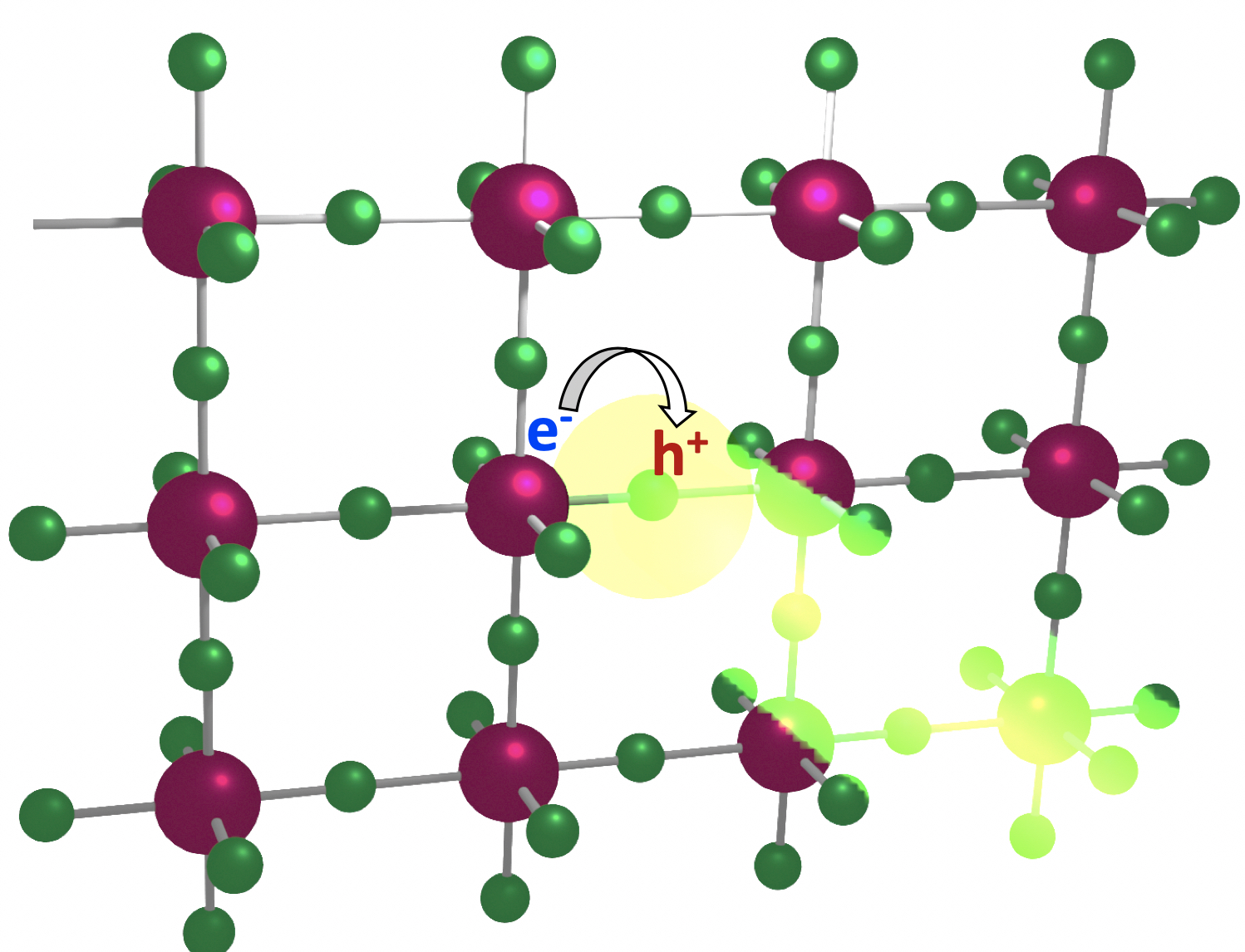
Organic Spacers Improve LED Performance
Sandwiching a 2-D light-emitting layer between ring-shaped carbon compounds significantly improved device efficiency and brightness.
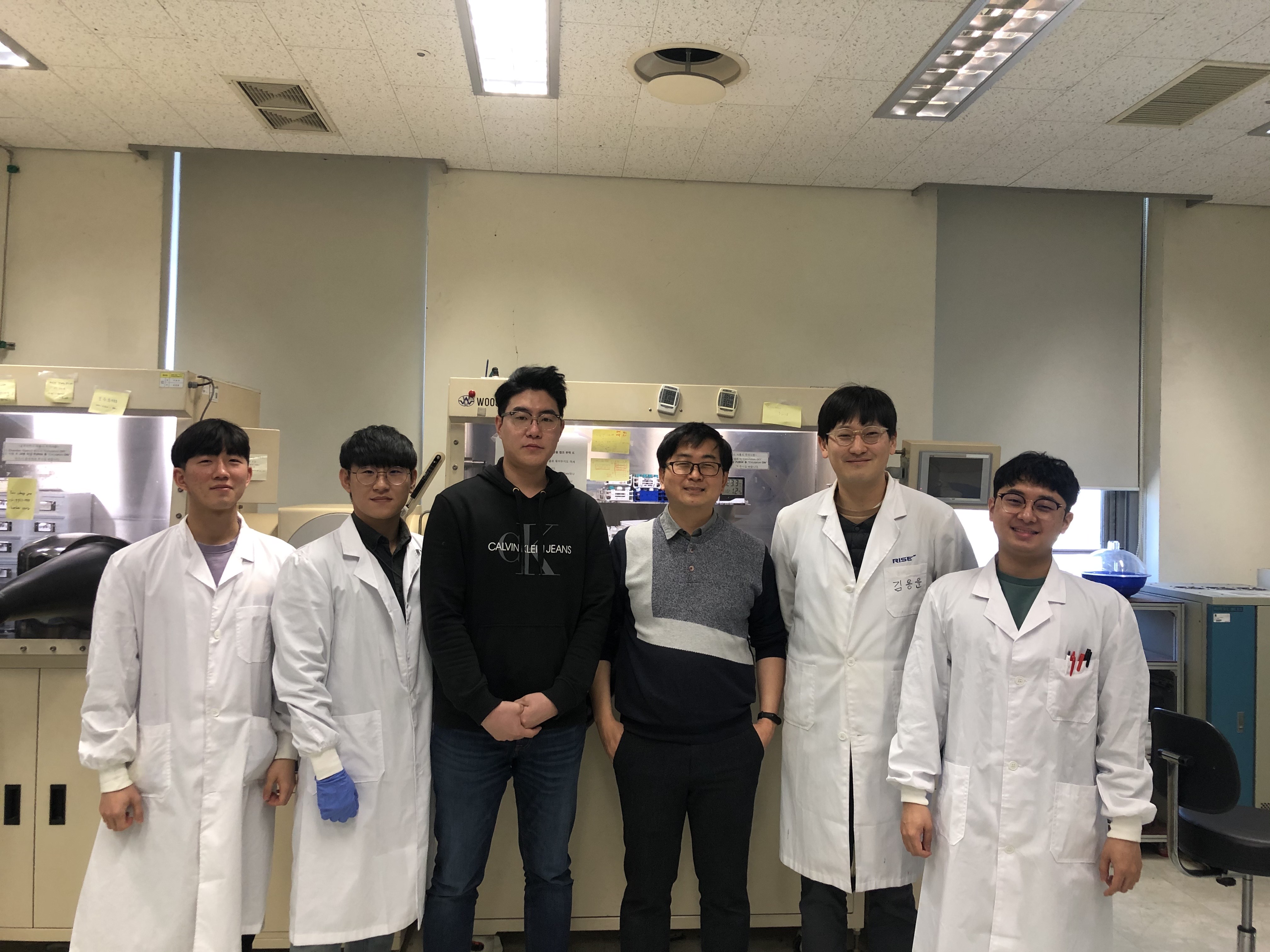
Stabilizing High-Efficiency Solar Cells
A new processing method helps the devices maintain their initial efficiency over time under continuous exposure to light or heat.
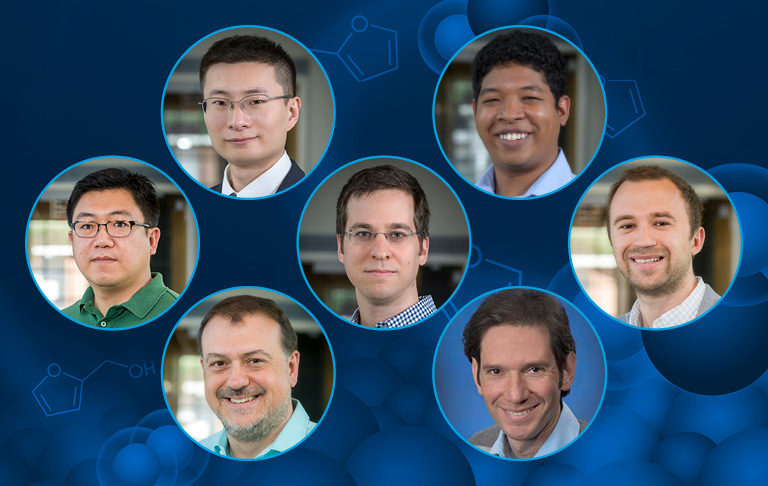
Upgrading Biomass with Selective Surface-Modified Catalysts
Loading single platinum atoms on titanium dioxide promotes the conversion of a plant derivative into a potential biofuel.
Atomic Defect Lines Suppress Deactivation of Iron Oxide Catalysts
A structure based on the low-cost, earth-abundant metal iron may be active enough to promote desired reactions without becoming “poisoned.”
Chasing Lithium Ions on the Move in a Fast-Charging Battery
Atomic distortions emerging in the electrode during operation provide a “fast lane” for the transport of lithium ions.
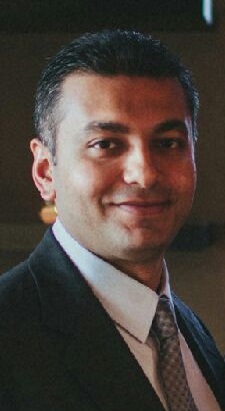
CFN User Spotlight: Nik Singh Seeks Better Battery Materials
Since 2011, Nikhilendra (Nik) Singh has been a senior scientist in the Materials Research Department at the Toyota Research Institute of North America. His quest to find alternatives to lithium-ion batteries has brought him to Brookhaven Lab’s Center for Functional Nanomaterials (CFN).
CFN Staff Spotlight: Xiaohui Qu Bridges the Data Science-Materials Science Gap
As a staff member in the Theory and Computation Group at Brookhaven Lab’s Center for Functional Nanomaterials, Qu applies various approaches in artificial intelligence to analyze experimental and computational nanoscience data.

Top-10 Science and Technology Achievements of 2019
In 2019, scientists at the U.S. Department of Energy’s (DOE) Brookhaven National Laboratory dove deeper into proton spin, took a leap in quantum communication, and uncovered new details of plant biochemistry, battery cathodes, catalysts, superconductors, and more. Here, in no particular order, are the biggest advances of the year.
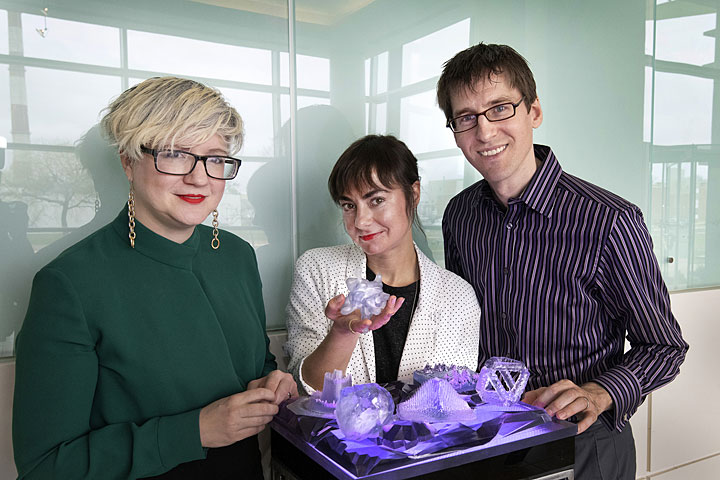
Transforming Advanced Nanoscience Data into Interactive Art
A scientist, an artist, and a computer music professor combined 3-D printing, sound, and virtual reality to represent nanoscience data.